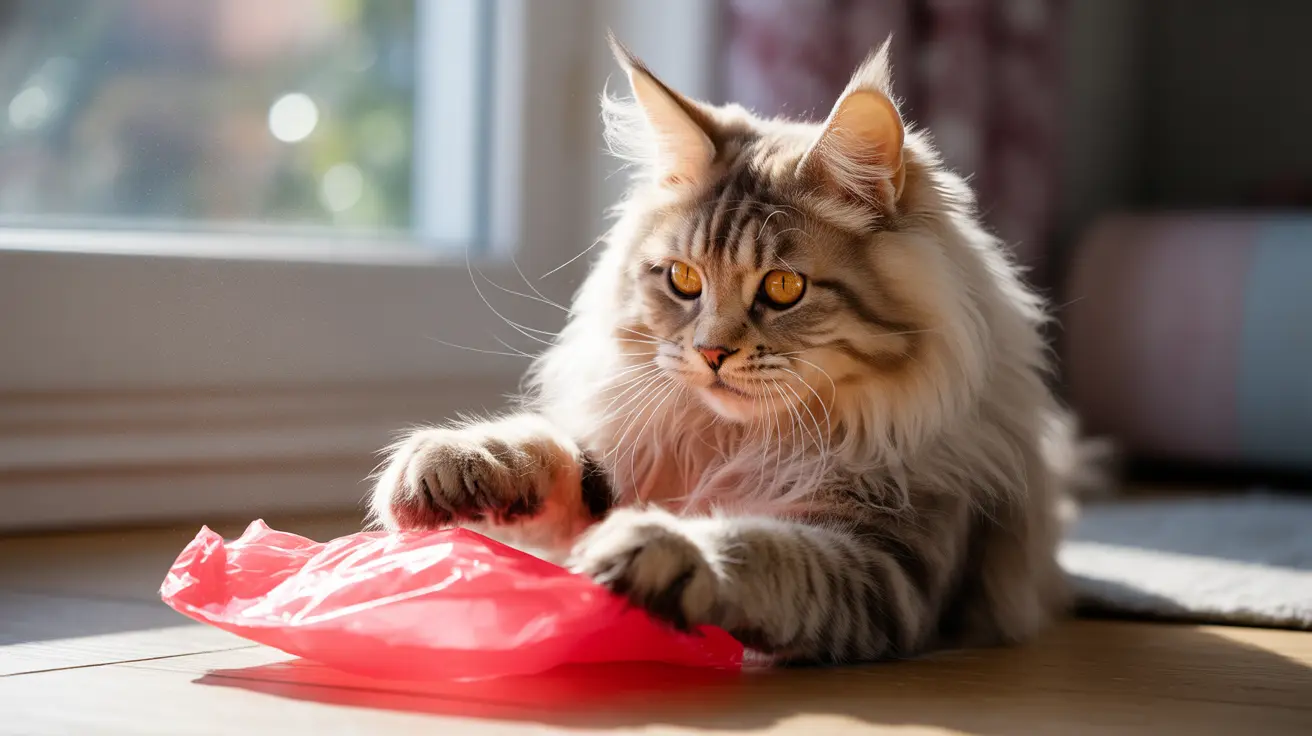If you've caught your feline friend nibbling on plastic bags, wrappers, or other synthetic materials, you're not alone. Many cat owners find themselves puzzled and concerned when their pets develop an appetite for plastic items. This behavior, while common, can be dangerous and often indicates underlying issues that need attention.
In this comprehensive guide, we'll explore the fascinating reasons behind this behavior, identify potential health risks, and provide practical solutions to keep your cat safe. Understanding why cats eat plastic is the first step toward preventing this potentially harmful habit.
The Science Behind Plastic Attraction
Cats are naturally drawn to plastic items for several sensory reasons. The crinkly sound of plastic bags mimics the rustling of prey in nature, triggering their hunting instincts. Additionally, many plastic items contain animal-derived compounds or food residue that cats can detect with their superior sense of smell – up to 14 times stronger than humans.
Chemical Attraction and Scent Appeal
Surprisingly, some plastic products contain stearates derived from animal fat, making them inherently attractive to cats. Shopping bags, food packaging, and other household plastics might carry traces of these compounds, along with residual food scents that can be irresistible to curious felines.
Medical Causes for Plastic Consumption
When cats persistently eat non-food items like plastic, they may be suffering from pica, a condition that can stem from various health issues. Potential medical causes include:
- Nutritional deficiencies
- Gastrointestinal disorders
- Dental problems
- Hyperthyroidism
- Feline leukemia or immunodeficiency virus
Behavioral and Environmental Factors
Stress and Anxiety
Cats may turn to plastic chewing as a coping mechanism for stress or anxiety. Changes in their environment, new pets, or disruptions to their routine can trigger this behavior. The repetitive action of chewing can release calming endorphins, making it a self-soothing activity.
Boredom and Lack of Stimulation
Indoor cats, in particular, may resort to plastic chewing out of boredom. Without adequate environmental enrichment and physical activity, they may seek out inappropriate objects for entertainment and stimulation.
Health Risks and Dangers
Plastic consumption poses several serious health risks to cats:
- Intestinal blockages requiring emergency surgery
- Choking hazards
- Exposure to toxic chemicals
- Dental injuries
- Chronic digestive issues
Prevention Strategies
Creating a Safe Environment
The most effective way to prevent plastic consumption is to remove access to these items. Store plastic bags securely, dispose of packaging promptly, and create designated plastic-free zones in your home.
Enrichment and Alternatives
Provide appropriate alternatives and enrichment activities:
- Cat-safe chew toys
- Interactive puzzle feeders
- Regular play sessions
- Rotating toy selection
- Cat grass or catnip gardens
Frequently Asked Questions
Why does my cat keep chewing or eating plastic bags and wrappers?
Cats may chew plastic due to various factors including sensory attraction, nutritional deficiencies, stress, or medical conditions like pica. The crinkly texture and animal-derived compounds in some plastics can make them particularly appealing to cats.
What health risks can plastic ingestion pose for my cat?
Plastic ingestion can lead to serious complications including intestinal blockages, choking, toxic exposure, and internal injuries. These conditions may require emergency veterinary intervention and sometimes surgery.
How can I prevent my cat from eating plastic at home?
Store all plastic items securely out of reach, provide appropriate toys and enrichment activities, ensure a balanced diet, and maintain a stress-free environment. Consider using deterrent sprays on unavoidable plastic items.
Could my cat's plastic chewing be a sign of a medical condition like pica or stress?
Yes, persistent plastic chewing can indicate underlying medical conditions like pica, nutritional deficiencies, or stress-related behaviors. If your cat regularly attempts to eat plastic, consult your veterinarian for proper diagnosis and treatment.
When should I take my cat to the vet if it has eaten plastic?
Seek immediate veterinary care if you witness your cat ingesting plastic or notice symptoms such as vomiting, lethargy, loss of appetite, or changes in bowel movements. Don't wait for symptoms to worsen, as early intervention is crucial.
Conclusion
While plastic-eating behavior in cats can be concerning, understanding its causes and taking appropriate preventive measures can help protect your feline friend. Remember to consult with your veterinarian if you notice persistent plastic-eating behavior, as they can help identify and address any underlying health issues.






